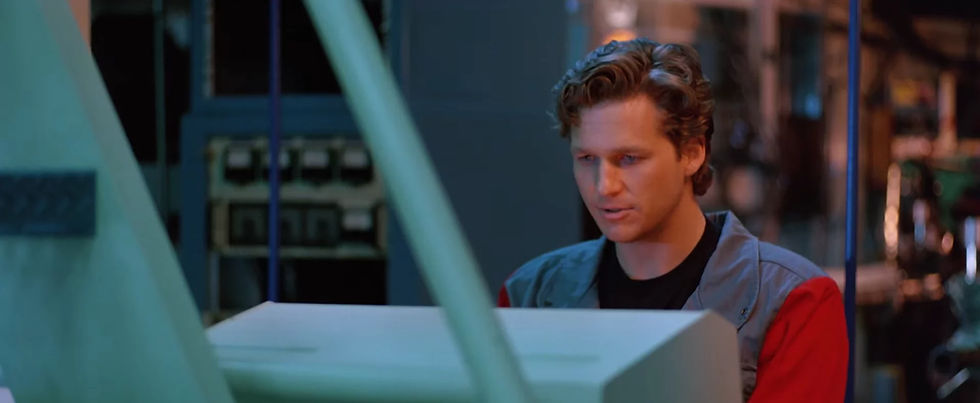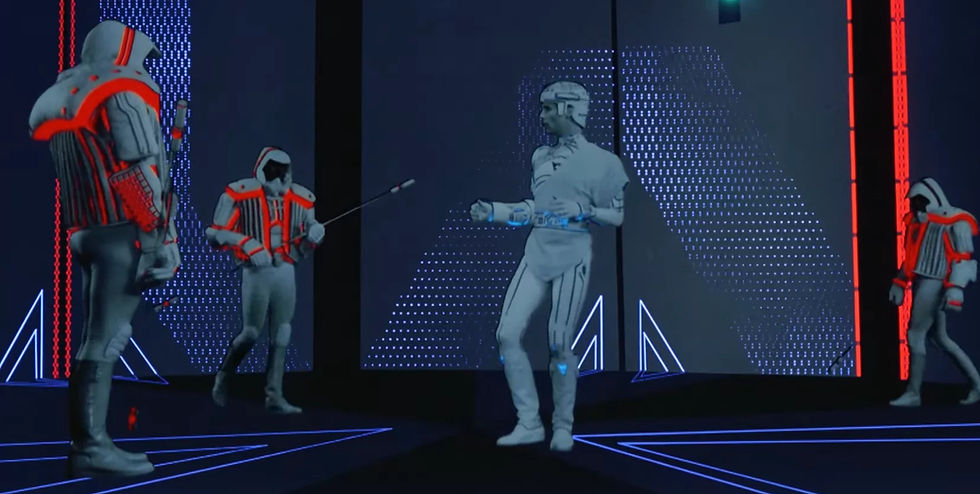Everything You Need to Know About the Tron Movie Franchise
- Sakshi D

- Oct 2
- 5 min read

Tron is one of those franchises that shouldn’t have worked. A movie set inside a computer in 1982 when most people had never touched a keyboard? A sequel 28 years later banking on nostalgia for a film that flopped? And yet here we are, still talking about it.
The franchise created an entire aesthetic that’s been copied, referenced, and ripped off for decades. Those glowing neon lines on black backgrounds? That’s Tron’s DNA in everything from The Matrix to Ready Player One. The light cycles, the disc battles, the idea that programs inside computers have personalities and drama? All Tron.
I’m going to break down everything that makes this franchise matter. Lessgooo!
Tron Movie Franchise - The Original: Tron (1982)
How It Happened
Director Steven Lisberger saw the video game Pong in 1976 and had a wild thought: what if you could make a whole movie that takes place inside a computer?
Keep in mind, this was before personal computers were even a thing. He pitched this idea to every studio in Hollywood, and they all said no because it sounded completely insane.
Disney finally took a chance on it after executive Tom Wilhite saw test footage and decided to fund the most ambitious visual effects experiment anyone had attempted. They shot actors in black suits against black backgrounds, then hand-painted glowing lines on every single frame. They mixed that with early CGI from multiple companies because no single studio could handle what Lisberger wanted.
Lisberger later said making Tron was like “pushing a crude airplane over a cliff then working out how to make it fly as it fell.” That’s exactly how it felt watching it, too.
The Plot

Kevin Flynn is a video game programmer who gets screwed over by his former boss at ENCOM. His ex-boss Ed Dillinger stole Flynn’s code and passed it off as his own.

When Flynn tries to hack into ENCOM’s system to prove it, the Master Control Program—this all-powerful AI running the company’s mainframe—literally digitizes him into the computer world.
Inside the Grid (the computer world), Flynn meets Tron, a security program created by his friend Alan. They fight through lightcycle races and disc battles to take down the MCP and free the system. Flynn eventually escapes back to reality with proof of the theft.
The plot is simple. The visuals were anything but.
Check out My Top 5 Favorite Sci-Fi Movies
Why It Changed Everything
Tron included 15 minutes of full CGI sequences. That sounds like nothing now, but in 1982, that was unheard of. The film pioneered techniques that nobody had combined before - backlit animation, hand-colored cels, and early 3D computer graphics.

The crazy part? The Academy Awards disqualified Tron from the Best Visual Effects category because they thought using computers was “cheating.” Yes, really. They gave it a Scientific and Technical Oscar later, but the irony is thick.
John Lasseter from Pixar said, “Without Tron there would be no Toy Story.” The Matrix, Avatar, every movie with extensive CGI owes something to what Tron proved was possible.
Over time, Tron became a cult classic beloved by tech nerds and filmmakers who understood what it accomplished.
You might like Love, Death, and Robots Volume 4
The Sequel: Tron: Legacy (2010)
28 Years Later

Disney wanted a sequel for years, but couldn’t figure out how to do it. Then they saw commercial work from director Joseph Kosinski and hired him to make a proof-of-concept reel. They showed it at Comic-Con 2008, and the reaction convinced executives to greenlight a $170 million sequel.

The movie took advantage of every visual effects advancement that happened between 1982 and 2010. They built elaborate digital sets, shot in 3D, and pulled off something no one had done before—they digitally recreated a young Jeff Bridges to play CLU, Kevin Flynn’s corrupted digital clone.

This was the first movie to fully de-age a living actor for a main role. They put a motion-capture helmet on Bridges, used hundreds of reference photos from the 1980s, and digitally sculpted a younger face onto his performance.
The tech wasn’t perfect, but it was groundbreaking.
The Story
Sam Flynn is Kevin’s son. He grew up without his dad, who disappeared mysteriously 20 years ago.

On Sam’s 27th birthday, he gets a message from his father leading him to the old Flynn’s Arcade. Sam accidentally triggers a portal into the Grid and gets trapped in the same digital world from the first film.

Inside, Sam meets Quorra, a program who’s been protecting Kevin in hiding. They discover CLU (Kevin’s digital duplicate) has taken over the Grid and wants to escape into the real world to create his version of “perfection.” Sam, Kevin, and Quorra fight CLU’s forces. Kevin sacrifices himself so Quorra can escape to the real world with Sam.
What Made It Work

Legacy is 80% CGI. Only 15% of what you see on screen is traditional live-action.
The entire Grid—the cityscapes, the light cycles, the clubs—was digitally created. They shot most of it on 35mm film, then added layers of computer-generated environments.
The movie also had Daft Punk (hello?!) composing the score from early in production. Director Kosinski said having them involved from the start meant the visuals and music could develop together, creating that tight fusion that makes the film feel cohesive.
The Visual Effects Revolution
Both Tron films of the Tron Movie Franchise pushed boundaries in different eras.
1982’s Innovation
The original Tron team hand-painted glowing lines on black-suited actors frame by frame. They combined that with early CGI from three different companies because the technology was so new that no single studio could do everything they needed.

The result was a completely unique look - stark black backgrounds with neon blue, red, and yellow lines creating this retro-futuristic world.
No movie looked like it before. No movie has looked like it since because the technique was so labor-intensive.
2010’s Breakthrough
Legacy took digital effects to new levels.
The young Jeff Bridges/CLU creation alone required groundbreaking work. Over 1,500 VFX shots filled the film. Digital Domain and other studios created fully computer-modeled cities and environments that looked photo-real.
They also pioneered digital costumes, like the light suits worn by characters were 3D printed and had line patterns animated digitally. The whole production was shot to maximize 3D effect, using IMAX-certified cameras with 35mm and 65mm formats.
What’s Next: Tron: Ares (2025)

Disney announced a third film years ago. It went through development hell but finally solidified.
Tron: Ares drops October 10, 2025.
Director Joachim Rønning is handling it. Jared Leto stars as Ares, a “super-intelligent program” who enters the real world. The official description calls it “humankind’s first encounter with A.I. beings.”

The cast includes Greta Lee, Evan Peters, Jodie Turner-Smith, Hasan Minhaj, and Gillian Anderson. Jeff Bridges returns as Kevin Flynn in some capacity. Trent Reznor and Atticus Ross from Nine Inch Nails are composing the score.
This film is positioned as a soft reboot with new characters and a new story, but connected to the existing Tron world. Instead of humans entering the Grid, this time a program enters our world. The stakes flip.
Disney also explored a live-action TV series for Disney+ with showrunner John Ridley, but that got scrapped before it was officially greenlit.
And then there’s this…

via Reddit
But anywho, let’s not delve into the drama.
Why Tron Still Matters
Tron created the visual language for cyberspace before most people understood what that meant. The glowing neon aesthetic, the idea of digital worlds with their own rules and inhabitants, the concept of programs having agency—all of that came from Tron.
Every time you see a movie or show with characters inside digital environments, that’s Tron’s influence.
And somehow, 40+ years later, we’re still excited to see what happens next in the Grid.
What’s your Tron experience? Are you an original cult classic fan or a Legacy convert? Tell me which version got you hooked!


















